A Hackathon, Reinforcement Learning, AutoGPT, Becoming a Rise Global Winner, and Exploring Drug Discovery!
Vinaya Sharma | September and October Newsletter 🍂🎃
Hey! If you’re new here, I’m Vinaya and welcome to Bits and Bytes! I'm a 17 y/o tech nerd from Toronto that’s always building. 👩💻
In this monthly newsletter, I share Bits and Bytes of my learnings to help you grow from my key insights! 🌱 Stay tuned for bits of self-improvement techniques and bytes of groundbreaking tech innovations.
I went down lots of rabbit holes this month just exploring my curiosity and trying to keep up with AI advancements. I spent most of these past two months taking on courses and building mini-projects to grow my technical skills and learn how to leverage exciting new developer tools. Check it out!👇
Building a new way to interact with your computer @ Hack the North 2023 👀
Back in September, I got to attend Hack the North, Canada’s largest Hackathon, and my team Peter, Bagavan, Krish and I spent the weekend creating myEye; a new way to interact with the web.
You have to admit, the traditional use of a keyboard and mouse can get boring, and it’s limiting and cumbersome for some individuals with disabilities or in situations where hands-free interactions are desired. That’s why we built myEye leveraging computer vision and AdHawk's eye-tracking software to create glasses that assist you with your digital needs.
From basic scrolling to selecting YouTube videos, to playing whole video games, myEye customizations automate and enhance the digital experiences by providing an "invisible" mouse, and keyboard. myEye uses the front and back facing cameras of the Adhawk glasses to simulate the mouse through your gaze (moving wherever you look), and keyboard commands through hand gestures (computer vision interpreting your actions).
As expected, we wrote most of the code in Python using Adhawk's Python SDK, but the crazy part was the amount of linear algebra we had to do to convert the vector coordinates returned from the eye-tracking software to map gaze to the computer screen. But despite the long math equations, we had a blast putting myEye together.
Check out our Devpost submission to see myEye scrolling the web and playing Minecraft.
Becoming a Rise Global Winner 🌎
Rise is a $1 billion commitment from Eric and Wendy Schmidt to find and support global talent. The program finds promising young people and provides them with opportunities that allow them to work together to serve others over their lifetimes.
I originally began my Rise journey an entire year ago when I began building Triage.AI; my AI-based chatbot and robust management system to answer, assist, triage and streamline 911 call centre processes. I got chosen as 1 of 500 finalists back in April, and after a series of interviews, presentations, and group challenges I found out I’ve been selected as 1 of 100 winners around the world from 14,000+ applicants. Joining this community of ambitious youth has been empowering and I can’t wait for the Residential Summit where I get to meet all the other winners in person.
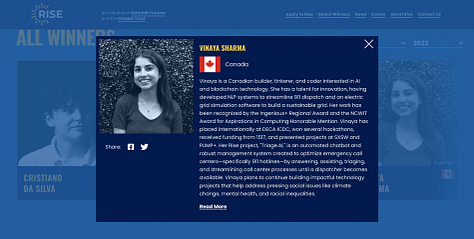
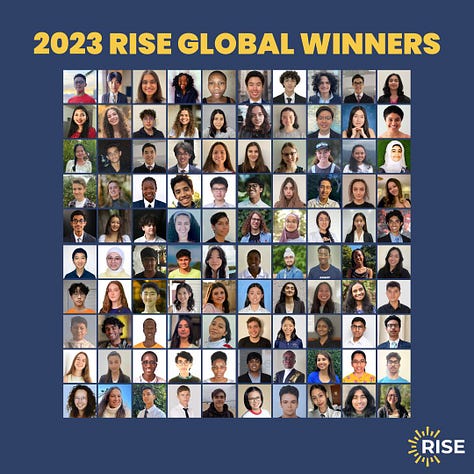
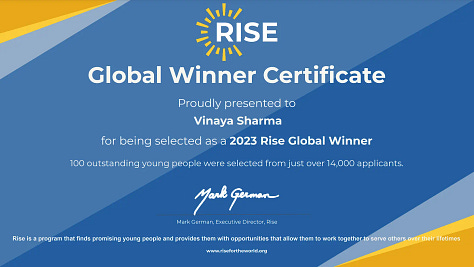
Turning my obsession with playing games into something useful 👾
If you remember, this past summer I began building AI bots to play games with Reinforcement learning. I started with Cartpole balancing in the OpenAI Gym and eventually levelled up to the Dino game with Deep Q-Networks. 🦖
These past two months I’ve now begun a proper course to fill in my knowledge gaps. I’m taking Hugging Face’s Deep Reinforcement Learning Course.
Hugging Face has made it insanely simple to begin building with RL libraries like Stable Baselines3 and even showed how to use unique custom environments on top of the classics like Space Invaders.
Reinforcement learning’s similarity to the way humans interact in the world made it interesting to learn the theory and math behind the algorithms, on top of the actual code implementations. Plus it was weirdly satisfying to quickly train a dog to fetch a bone or land on the moon successfully.
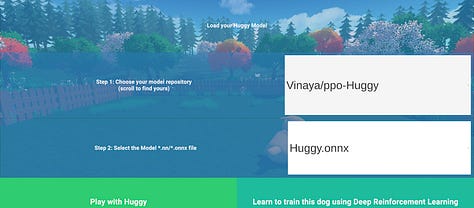
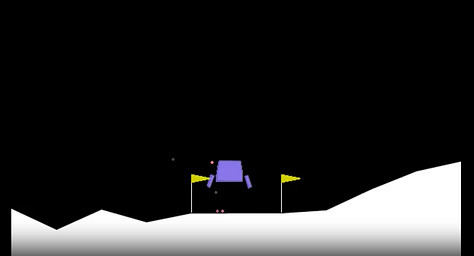
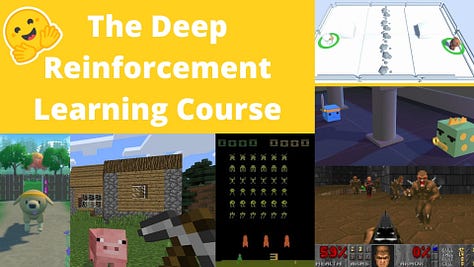
In hunting down exciting applications of Reinforcement Learning I came across Drug Discovery 💊
AlphaFold 2's successful solution to the Protein Folding challenge is well-known, and Reinforcement Learning’s contribution to this solution got me more interested in this domain. But in researching AlphaFold 2, the scale of its impact, and all the issues in the current Drug Discovery process, I became more absorbed into the underlying problem at hand; 10-15 years and $2 billion to bring a drug to market.
DeepMind’s AlphaFold 2, and Insilico Medicine’s Generative Tensorial Reinforcement Learning (GENTRL) model, are two such examples of RL in the field. But there is so much more happening as well. Researchers have applied GANs, and LLM’s, each model currently having their own strengths and weaknesses. I’m now trying to find ways to superpower drug discovery with AI powerups.
If you’re interested, you can read my article “Modelling Drug Discovery as a Game of Sudoku” where I explore the current Drug Discovery process, unravel inefficiencies in the field, and explain interesting AI models and innovative ideas I’m most excited by.
Attending the Gairdner Foundation awards
Thanks to TKS I had the opportunity to connect with this year's laureates who have made contributions to scientific discoveries in AI, bacterial communication, brain tumours, and more at the Gairdner Lectures and Gala. It was inspiring to see their commitment to their fields and hear about the small decisions and actions they took to eventually lead to their discoveries.
Speaking with Bonnie L. Bassler about how bacteria can talk, and sharing my thoughts on AI for drug discovery while asking Demis Hassabis questions about the field were highlights of the night.
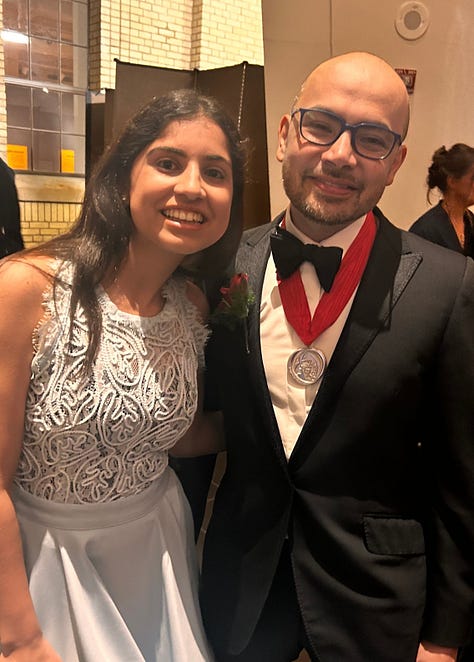
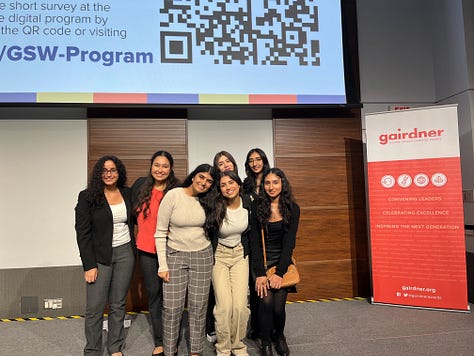
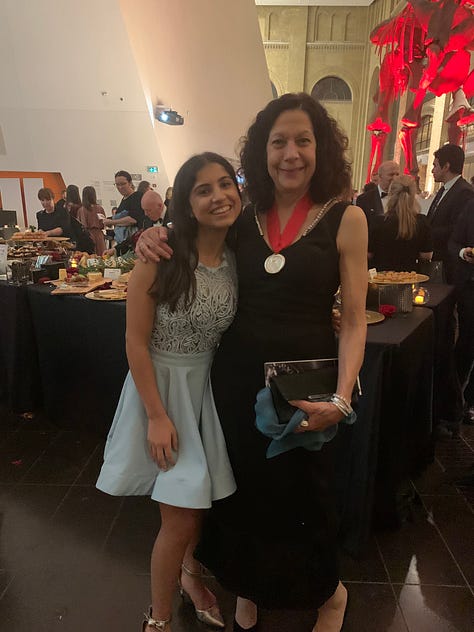
Closing thoughts and what’s next? 💭
Aside from all this fun learning, I randomly took a course on Pair Programming with a Large Language Model from DeepLearning.AI, where I got to learn about using Google’s PaLM API (an LLM specialized in mathematics, computer science and logical reasoning). Developer tools like this are super cool. I also fell down an AI agent rabbit hole, so I’ve been trying to set up Auto-GPT and am also looking into Microsoft’s AutoGen which has customizable agents showing great results.
Going into these last couple of months of the year, I’ll be spending most of my time building projects in the AI x Drug Discovery space, both from an AI model development point of view and building analytical tools for researchers to leverage.
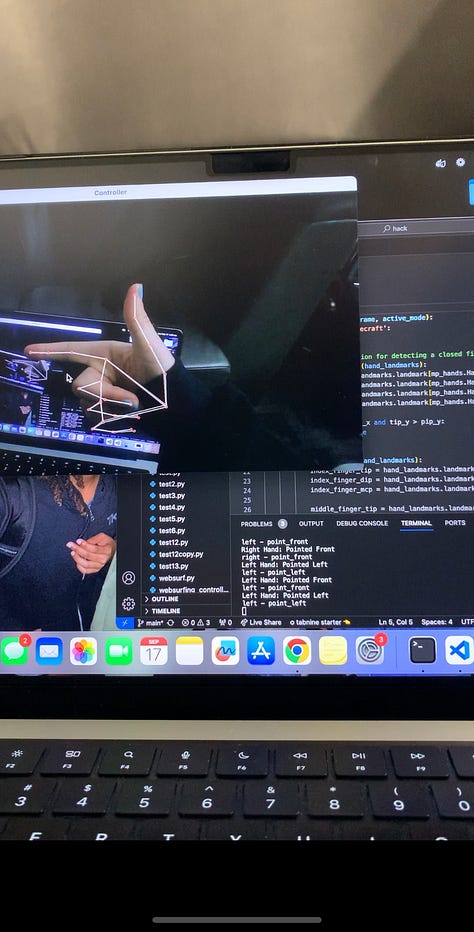
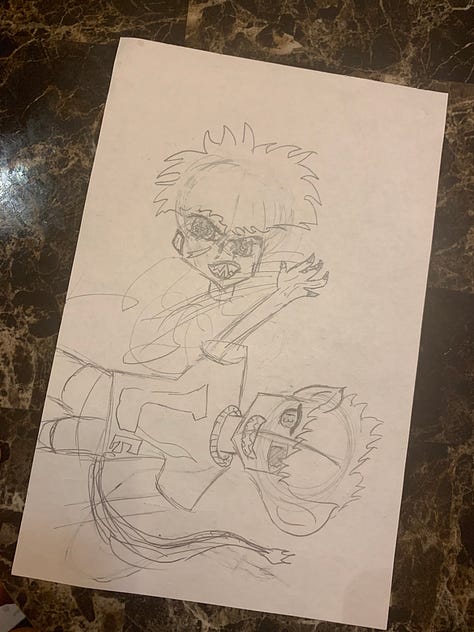
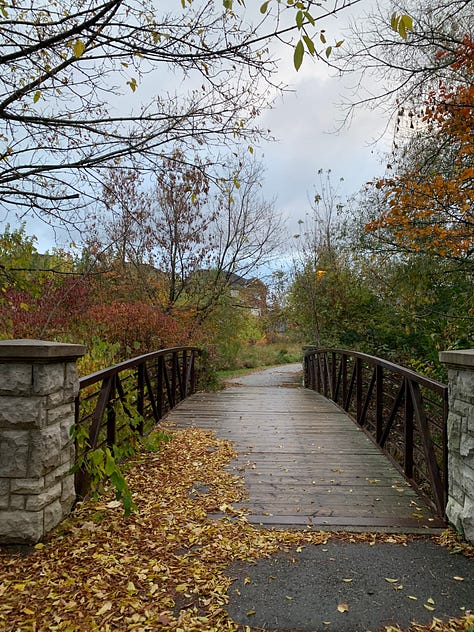





Vinaya,
First off, the dress you are wearing in the Gairdner Foundation pictures is absolutely stunning!! You are gorgeous and I think silver is your color. Second, the Huggy project you made is so so awesome my little sister who loves dogs thinks that it is the most awesome thing ever (and so do I!). And third, you're just so cool and I feel so lucky to call you one of my closest friends:) end of my mini lecture. ❤️
You’re amazing Vinaya!!! So glad RISE realized the insane impact you’re creating at such a young age :))